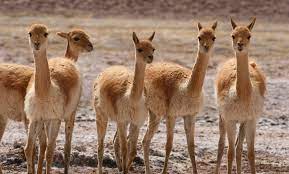Are you thinking of naming animals that begin with the letter “V” but can’t seem to come up with any? Don’t worry, you’re not alone! There are actually quite a few animals that start with this letter, some of which might even be lurking in your own backyard. From the versatile vole to the vocal vulture, these creatures are as fascinating as they are varied. Curious to learn more? Let’s explore this list together and discover some of the most unique and interesting animals that start with “V.”
Table of Contents
Overview of animals that start with v
1. Vampire Bat
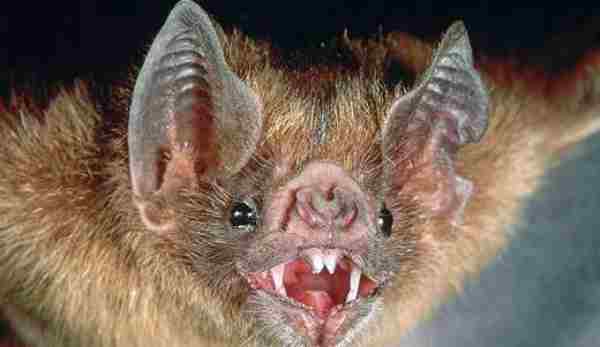
Vampire bats have long been a source of fascination and fear among people. While there are three different species of these bats, they all share one common trait: they feed exclusively on blood. Despite the common misconception that vampire bats suck the blood of their prey, they actually bite their hosts and lap up the blood that flows out. This unique feeding habit has led these creatures to be both admired and vilified in equal measure.
2. Vampire Squid

The deep ocean is full of mysterious creatures that inspire awe and fear in equal measure. Among these, perhaps the most unsettling is the vampire squid. With its jet-black or red skin and eerie red eyes, this creature looks like it emerged straight from a horror movie. Its tentacles are surrounded by a delicate, web-like membrane that only adds to its otherworldly appearance. Despite all these spooky features, however, the vampire squid doesn’t actually feed on blood – it survives on a diet of sea detritus, including fecal pellets and dead plankton.
3. Vancouver Island Marmot

In the lush forests of Vancouver Island, you might come across a striking sight. Standing before you is a large rodent, with fluffy fur and a vibrant coat. This is the Vancouver Island Marmot, the largest of its kind in the Squirrel family. Weighing in at a hefty 3-7kg, these majestic creatures can only be found in Canada’s wild. But perhaps the most fascinating thing about them is their short gestation period. In just 30-35 days, these marmots miraculously give birth to new offspring, contributing to the growth of their species and the diversity of the island.
4. Variegated Squirrel
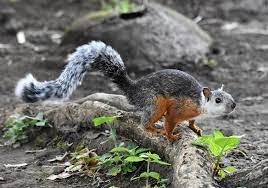
Picture yourself walking through the lush rainforests of South America, admiring the vibrant flora and fauna. Suddenly, a flash of movement catches your eye as a Variegated Squirrel darts up a nearby tree. These unique creatures are found in many types of South America and are known for their stunning fur patterns. Despite spending their nights in nests high up on trees, the Variegated Squirrel is a diurnal animal, meaning they are active during the day.
5. Vaquita
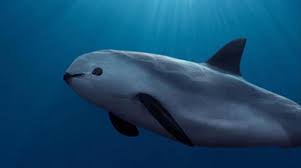
Vaquitas are unique marine animals that are often overlooked by the general public. Despite their small size, they are closely related to whales and dolphins and are characterised by their distinct black patches around their eyes and lips. Also known as porpoises or little cows, these mammals prefer shallow waters and are typically found off the coast of Mexico. The most interesting aspect of vaquitas, however, is their reproductive process. Unlike most marine animals, they give birth to live young and breathe air like any other mammal.
6. Vagrant Shrew

Meet the Vagrant Shrew- a tiny mammal found in the western regions of the US and Canada. Though they may be small in size, these little creatures are extremely ferocious eaters, devouring up to 160% of their body weight in food each day. But wait, there’s more! These shrews possess a unique talent- echolocation. Unlike bats who use this technique for hunting prey, Vagrant Shrews use it for a variety of other purposes.
7. Velvet Asity

The Velvet Asity is truly a unique bird species found only in Madagascar. With their dark feathers and distinctive green wattle above their eyes, they are a sight to behold. And for those lucky enough to catch a glimpse of the males after moulting, they’ll be treated to a surprising splash of yellow on their wingtips. But this vibrant addition doesn’t last forever, as the yellow eventually wears away. Despite their stunning appearance, the Velvet Asity is unfortunately threatened by habitat loss and hunting.
8. Verreaux’s Sifaka

Madagascar, the island paradise known for its unique and bizarre wildlife. Among the many species that call it home, there is one that stands out; the White Sifakas. These members of the lemur family are easily recognized by their snow-white fur, making them a sight to behold amidst the lush green foliage of their natural habitat. But what truly makes them special is their level of adaptation to their environment. Verreaux’s Sifakas, a subspecies of the White Sifakas, are so evolved to tree-dwelling that they have lost the ability to walk on land altogether.
9. Vervet Monkey

The Vervet monkey is a fascinating creature that can be found roaming the forests and grasslands of Eastern Africa. With its signature grey or olive fur and black-tipped tail, the Vervet monkey is a stunning sight to behold. But it’s the males that really stand out with their bright blue testicles. While this may seem like a bizarre fact, it’s actually an important part of their biology. It allows potential mates to easily distinguish between males and females, ensuring that only healthy and genetically viable individuals are chosen for reproduction.
10. Vicuña
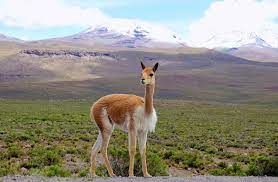
Vicunas are fascinating creatures that many of us haven’t had the opportunity to encounter in person. Similar to llamas and alpacas, these Andean mammals are known for their furry coats that keep them warm in chilly conditions. It’s hard to believe that such a thin layer of wool can be so effective, but the vicuna’s fur is truly a remarkable feat of nature. What’s even more impressive is that these animals are not domesticated, unlike their relatives.
11. Viper
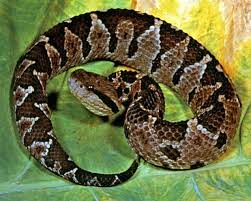
The world of vipers can be both fascinating and frightening. These venomous snakes are most commonly recognized for their incredibly long fangs and ability to open their jaws nearly 180 degrees to strike their prey. However, did you know that most vipers are ovoviviparous? This means that their young hatch from eggs that are kept inside the mother’s body until they’re ready to emerge. It’s an amazing adaptation to ensure the survival of the offspring in environments where eggs may be exposed to predators or harsh conditions.
12. Viperfish
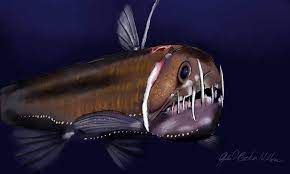
The viperfish is truly one of the most unique and fascinating creatures in the ocean. With jaws that resemble a bear trap and teeth that are nearly as long as the fish itself, this deep-dwelling species is a true predator of the ocean. Despite living up to 40 years in their natural habitat, these fish rarely survive for more than a few hours when in captivity, making them a rare sight in aquariums. Interestingly, viperfish also have photophores on their dorsal and ventral surface which they use to lure in prey – an incredible adaptation that helps them thrive in the depths of the ocean.
13. Vinegaroon
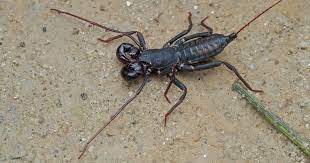
The vinegaroon, also known as the whip scorpion, may look intimidating, but it is surprisingly calm and friendly to humans. This arachnid is actually closer in relation to spiders than to scorpions, despite its name. One of its unique forms of defence is the ability to spray a mist of acetic acid that smells like vinegar, which sounds like it could be bothersome if you’re up close and personal with one. Despite this defence mechanism, some people have actually taken a liking to the vinegaroon and even keep them as pets!
14. Virginia Opossum
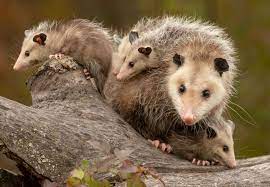
The Virginia opossum may not be as well-known as some of its furry cousins, but this remarkable creature has a fascinating trick up its sleeve. Found in various parts of North and South America, it is unique in being the northernmost marsupial in the world. But that’s not all – when threatened by predators, the Virginia opossum has the ability to feign death to avoid being attacked. This clever tactic is likely the origin of the phrase ‘playing possum’.
15. Visayan Spotted Deer
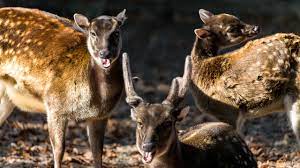
The Visayan Spotted Deer, also known as the Philippine Spotted Deer, is a fascinating animal that draws attention with its unique beige-spotted coat. These enchanting deer are native to the Visayan islands of Panay and Negros, where they roam freely through the lush forests and grasslands. However, what’s more intriguing is how male Visayan Spotted Deer use their voice to attract females during mating season. Male deer roar in a deep voice, almost like a lion, to let the females know they are ready to mate.
16. Visayan Warty Pig
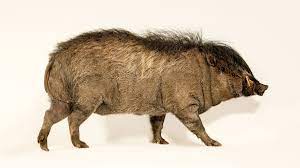
These hogs originate from the Visayan islands in the Philippines. Their name comes from the fleshly protrusions on their faces.These pigs display remarkable cleverness and were observed employing implements to dig while in a zoo in France.
17. Vlei Rat
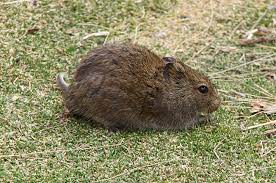
These unique rodents can be found in various parts of Africa and are easily distinguishable from other rodents due to their shorter faces and legs. One interesting thing about vlei rats is the range of coat colours they have, from shades of brown to grey and everything in between. But the most fascinating thing about these little creatures is their abundance of brown fat. This fat helps them produce heat as they break it down, allowing them to regulate their body temperature in any environment.
18. Volcano Rabbit
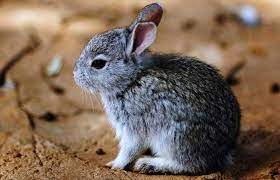
Mexico is home to many creatures, but one of the most adorable is the Volcano Rabbit. Despite being the second smallest rabbit in the world, these furry friends are big on personality. Only found in Mexico, they have become a beloved symbol of the country’s wildlife. What sets them apart from their bunny brethren is their unique warning system. Instead of thumping their feet on the ground, the Volcano Rabbit emits high-pitched sounds when they sense danger.
19. Vole
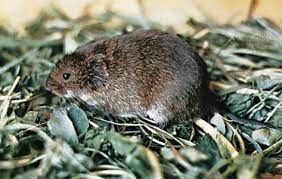
Voles may be small rodents, but they have a big heart – both literally and figuratively. Found in almost every part of the world, they share ancestry with lemmings and hamsters. In North America, they’re often referred to as field mice, but make no mistake – these creatures are unique in their own right. One particularly fascinating fact about voles is that they’re empathic, meaning they console one another when feeling down. It’s just another layer to the complex social lives of these furry critters.
20. Vulture
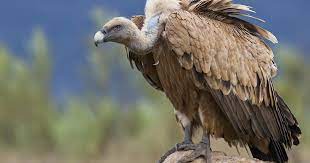
Vultures are a commonly recognized bird due to their unique physical characteristics and often grim reputation. With their iconic bald heads, black feathers, and habit of feeding on carrion, they have become a familiar figure in many cultures and mythologies. Often seen as harbingers of death and doom, these birds have captivated human imagination for centuries. Despite their less-than-glamorous lifestyle, vultures are fascinating creatures.
FAQs
What animals start with letter V?
Several animals start with the letter “V.” Some examples include the Vulture, known for its scavenging abilities and distinctive bald head; the Vampire Bat, which feeds on the blood of other animals; the Vicuña, a small South American camelid prized for its soft and valuable wool; the Vervet Monkey, found in Africa and known for its social behaviour and bright blue face; and the Vaquita, a critically endangered porpoise found in the Gulf of California, Mexico.
What animal starts with V in the zoo?
In the zoo, you can find the Vervet Monkey as an animal that starts with the letter “V.” Vervet monkeys are popular zoo inhabitants due to their engaging social behaviours, acrobatic abilities, and distinctive bright blue faces. Visitors to the zoo can observe these agile primates swinging from branches, interacting with one another, and displaying their natural curiosity, making them a fascinating addition to the zoo’s collection of animals.
What mammal names start with V?
Some examples include the Vervet Monkey, known for its distinctive blue face and social behaviours; the Vampire Bat, which feeds on the blood of other animals; the Vicuña, a small South American camelid prized for its soft and valuable wool; and the Vole, a small rodent found in various habitats worldwide.
Final Words
In conclusion, the animal kingdom never ceases to amaze us with its diversity and uniqueness. The letter ‘V’ may not be the most commonly used starting letter for animals, but the ones that do exist are truly fascinating.
From the powerful and majestic vulture, with its keen sense of sight and scavenging abilities, to the adorable and shy vaquita, the world’s smallest porpoise, there is something truly special about each and every animal that starts with ‘V’.
Whether they fly, swim or run, these creatures have adapted and evolved to survive and thrive in their respective environments. They serve as a reminder of the intricate balance and beauty of nature and the importance of preserving these amazing creatures for future generations to enjoy.
Reference:
- https://www.teachingexpertise.com/classroom-ideas/animals-that-start-with-v/
- https://kidactivities.net/animals-that-start-with-v/

Zahra Makda
Growing up enjoying the beauty of my village, a good passion for nature developed in me from childhood. Following my passion for the natural world, I have chosen zoology for my graduation, during my undergraduate degree, I participated in many nature trails, bird watching, rescues, training for wildlife conservation, workshop, and seminars on biodiversity. I have a keen interest in invertebrate biology, herpetology, and ornithology. Primary interests include studies on taxonomy, ecology, habitat and behavior.

